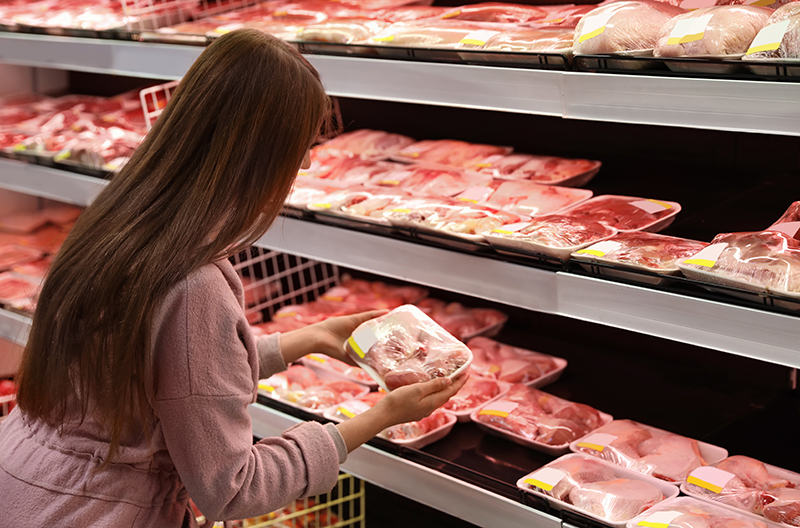Circana and 210 Analytics have taken a deep dive into the numbers to understand the marketplace impact on meat and poultry trends.
The average price per pound in the meat department across all cuts and kinds, both fixed and random weight, stood at $4.56 in May. For the first time in many months, the average price per pound in the meat department was below year-ago levels. This is driven by a decrease in the price per pound for processed meat.
After months of double-digit inflation, chicken prices at retail caught up with the decreases seen in wholesale. The average price per pound for chicken in May stood at $2.98, which was down 1.1 percent versus May 2022.
Most of the big sellers in fresh and processed trended at or below year-ago price per pound levels in May. In the 52-week view, the impact of high inflation could still be seen for chicken, turkey and packaged lunchmeat.
Meat sales
In May, mild deflation combined with a continued pullback on units and volume resulted in meat dollar sales being down 1.5 percent year-on-year. On an annual basis, meat sales still tracked 2.4 percent ahead in dollars, but pounds were 1.7 percent below the 2022 levels.
Volume was trending closer to year ago levels as of the fourth quarter of 2021, but recovery stalled in the fourth quarter of 2022. The pound performance suffered in the first quarter of the year but once more trended closer to year-ago levels in recent months.
Assortment
Assortment, measured in the number of weekly items per store, averaged 494 meat and poultry SKUs in May. This was down 2 percent versus year ago levels and remains down substantially from the 2019 levels.
Fresh meat sales by protein
The difference in the year-over-year decrease in pound sales in May versus the 52-week look was minimal, at 0.9 percent versus 1.1 percent, respectively.
The difference in the dollar performance therefore lies in the level of inflation, or rather deflation in May. The path for the two biggest sellers, beef and chicken was very different in May. Whereas beef experienced a 2.2 percent decrease in pound sales, chicken pound sales increased 1.8 percent. These are fairly typical recessionary and inflationary patterns.
Chicken and fresh exotic (including bison) were the only two areas that increased pound sales in May. Chicken was the only species to accomplish pound growth in the 52-week look.
Processed meat
May processed meat sales were less than half that of fresh meat, at $2.2 billion. Dollar sales were down by 3.2 percent versus May 2022, while pounds decreased 2.2 percent.
In the 52-week view, dollar sales did stay ahead of year-ago levels by 3.4 percent, whereas the pound performance was pulled down by package lunchmeat and processed chicken.
Grinds
In the past year, grinds generated $14.3 billion, with 84.6 percent of dollars and pounds being generated by ground beef. The ground beef performance exceeds that of total beef, with a year-on-year pound increase of 1.5 percent in May when compared to May 2022 sales.
Additionally, ground chicken, pork and lamb gained in pounds in May, as grinds bring affordability and versatility to the meat department.
Rising Retail Prices Will Increasingly Test Consumers’ Appetite For Meat

